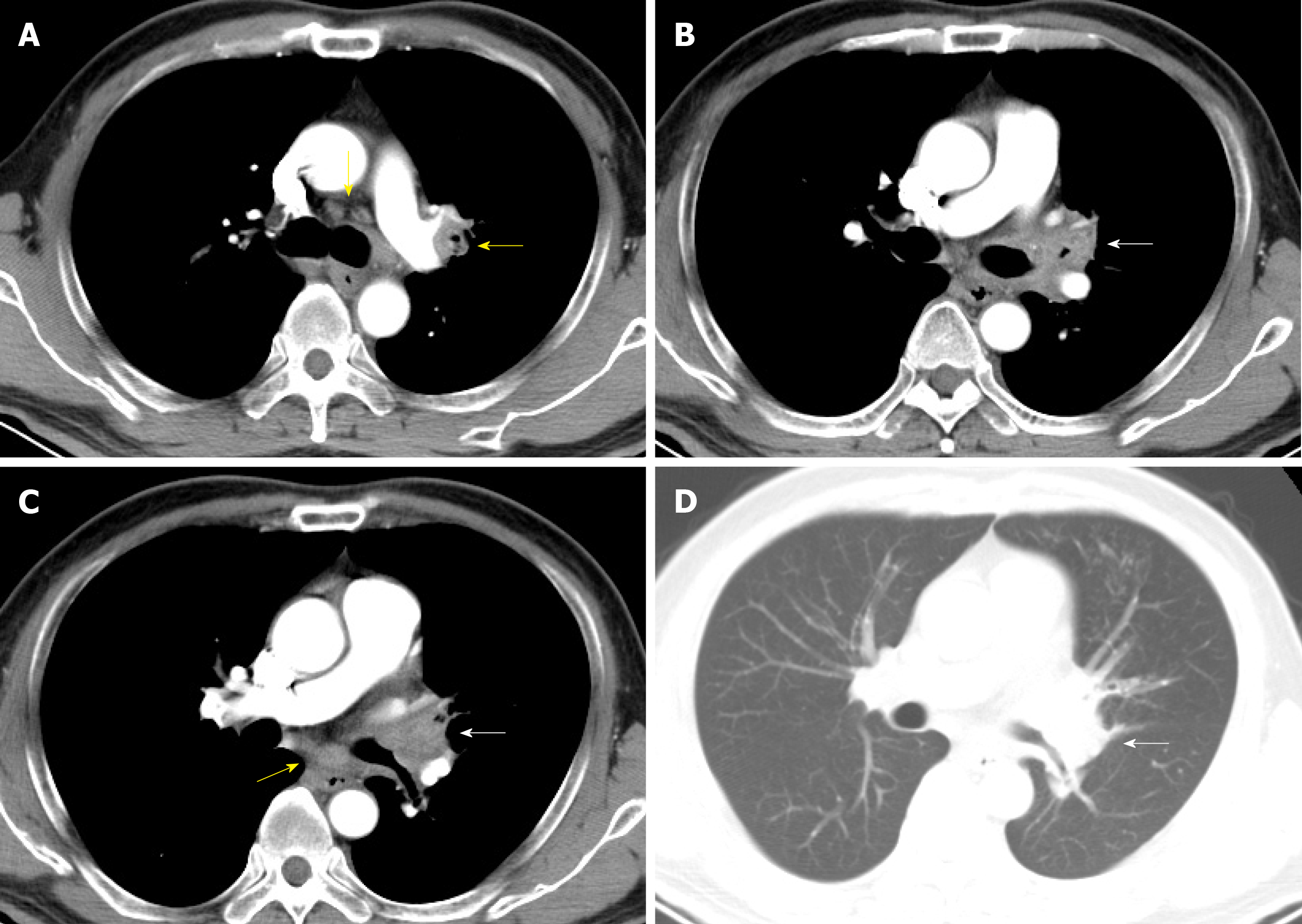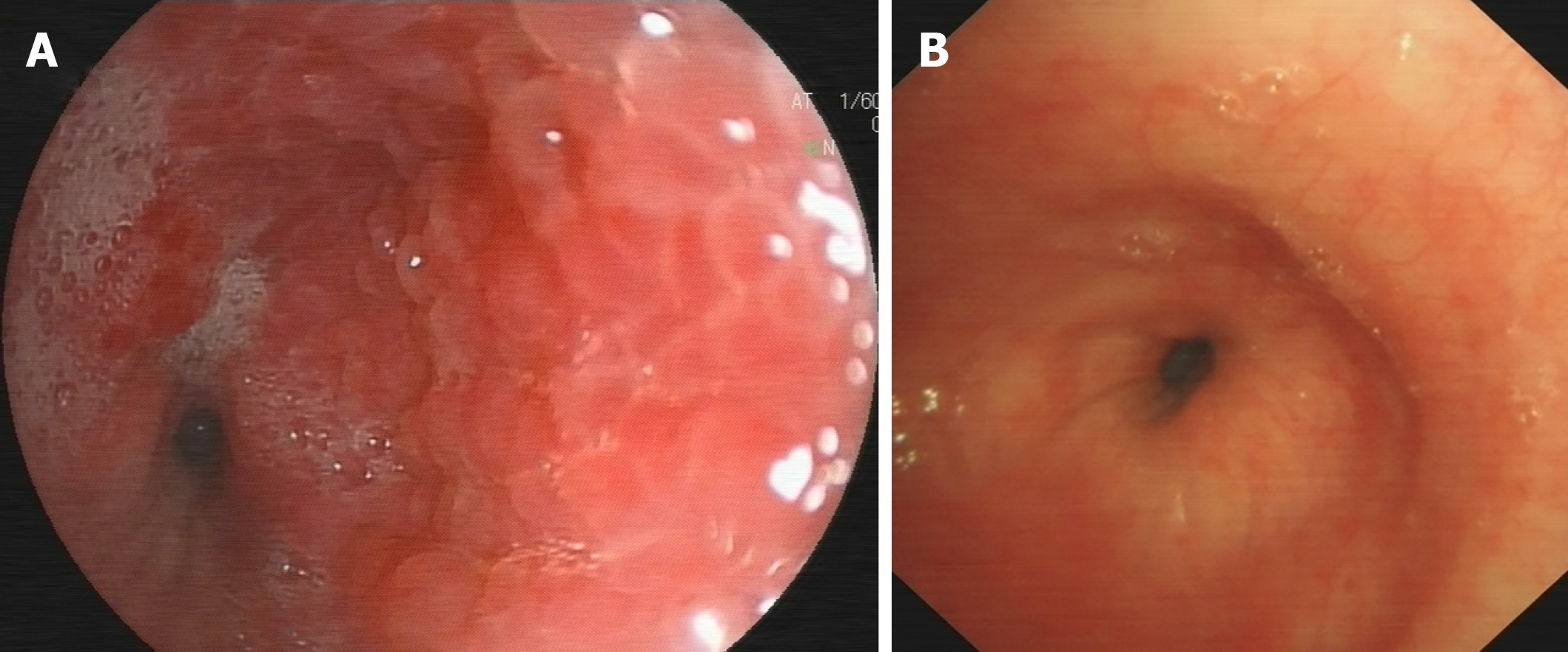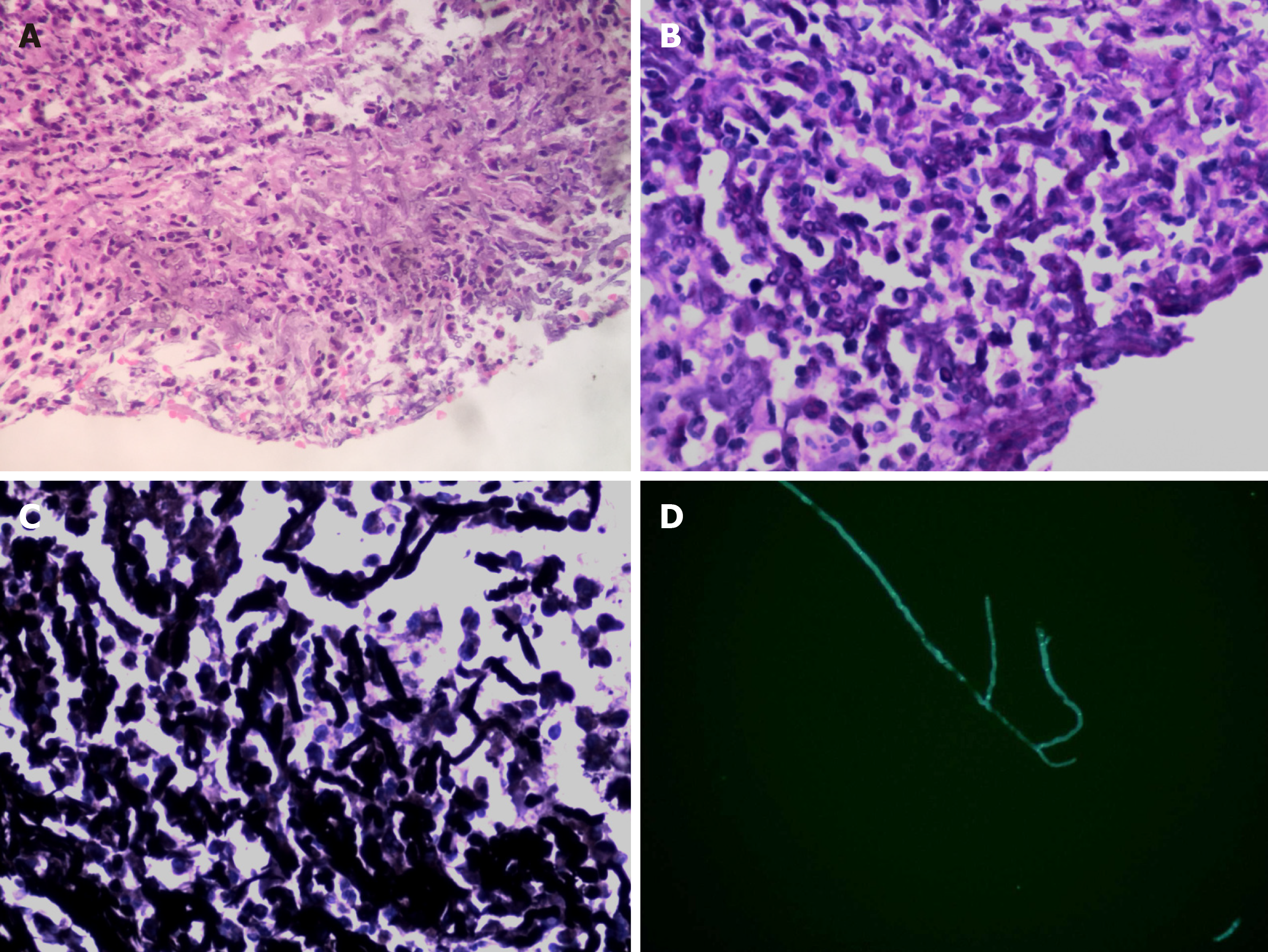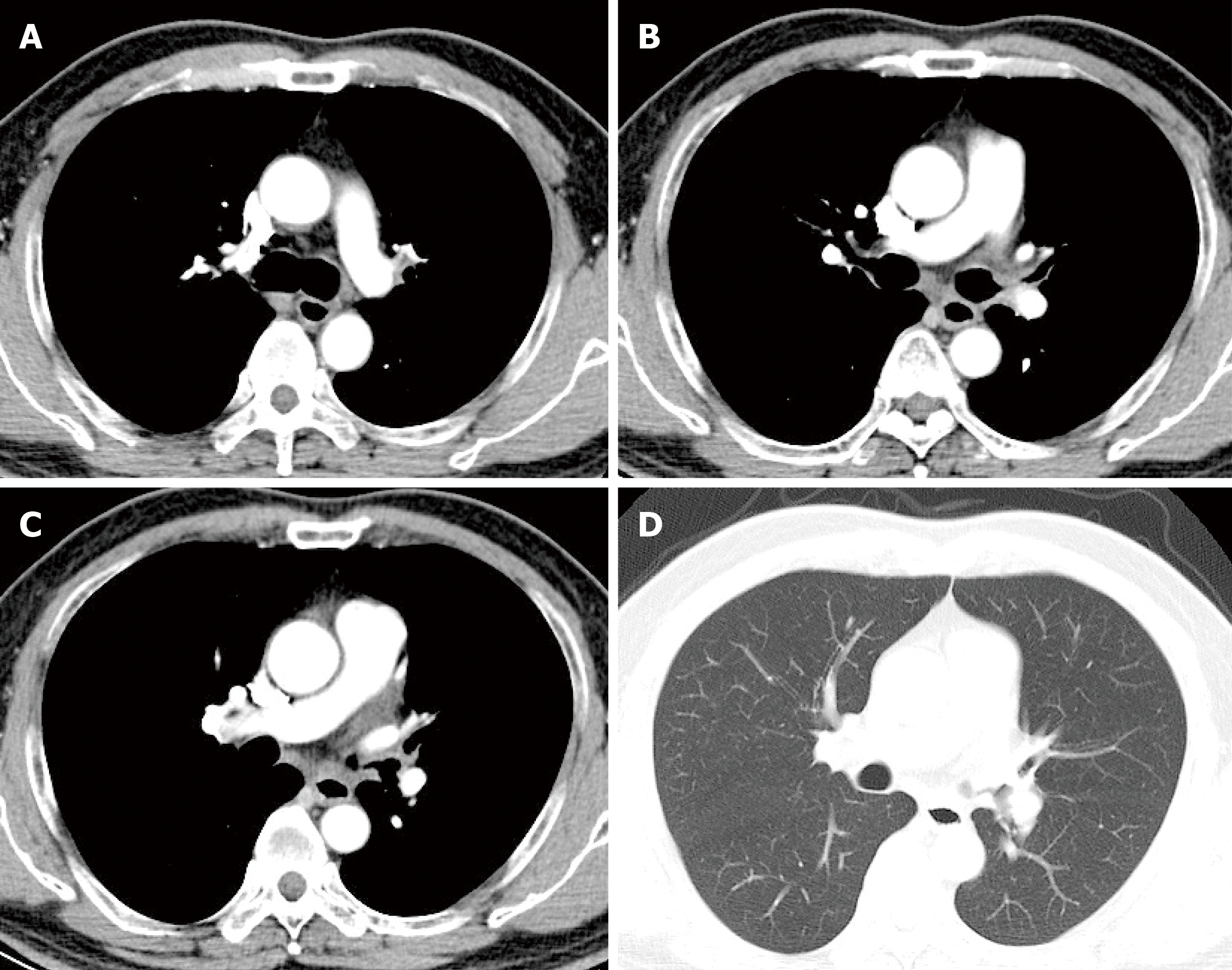Copyright
©The Author(s) 2019.
World J Clin Cases. Nov 26, 2019; 7(22): 3832-3837
Published online Nov 26, 2019. doi: 10.12998/wjcc.v7.i22.3832
Published online Nov 26, 2019. doi: 10.12998/wjcc.v7.i22.3832
Figure 1 Contrast-enhanced chest computed tomography images (2018-04-07).
A-C: Mediastinal window; D: Lung window. Contrast-enhanced chest computed tomography scan revealed enlarged mediastinum and hilum lymph nodes (yellow arrow) and an enlarged left hilum with a mass-like lesion leading to stenosis of the proximal part of the left upper bronchus (white arrow).
Figure 2 Bronchoscopy manifestations.
A: Bronchoscopy (2018-04-16) showed redness as well as thickening of bronchial membrane and bronchial stenosis in the left main bronchus; B: Repeated bronchoscopy (2019-03-26) showed thickening of left main bronchus, which was better compared to the former done on 2018-04-16.
Figure 3 Histological and microbiological evidence of fungal infection.
A: Fungal elements showing the 45° branching hyphae within biopsies under bronchoscopy (hematoxylin–eosin stain, 400×); B: Periodic Acid-Schiff staining was positive (400×); C: Grocott staining was positive (400×); D: Fungal fluorescence staining of bronchial membrane brushing sample done on 2019-3-26 revealed branching septate hyphae.
Figure 4 Repeated chest computed tomography scan images (2019-03-24).
A-C: Mediastinal window; D: Lung window. Repeated chest computed tomography scan revealed improvement and diminishment of the mass-like lesion and mediastinum and hilum lymph nodes compared to the computed tomography scan done on 2018-4-7.
- Citation: Su SS, Zhou Y, Xu HY, Zhou LP, Chen CS, Li YP. Invasive aspergillosis presenting as hilar masses with stenosis of bronchus: A case report. World J Clin Cases 2019; 7(22): 3832-3837
- URL: https://www.wjgnet.com/2307-8960/full/v7/i22/3832.htm
- DOI: https://dx.doi.org/10.12998/wjcc.v7.i22.3832












